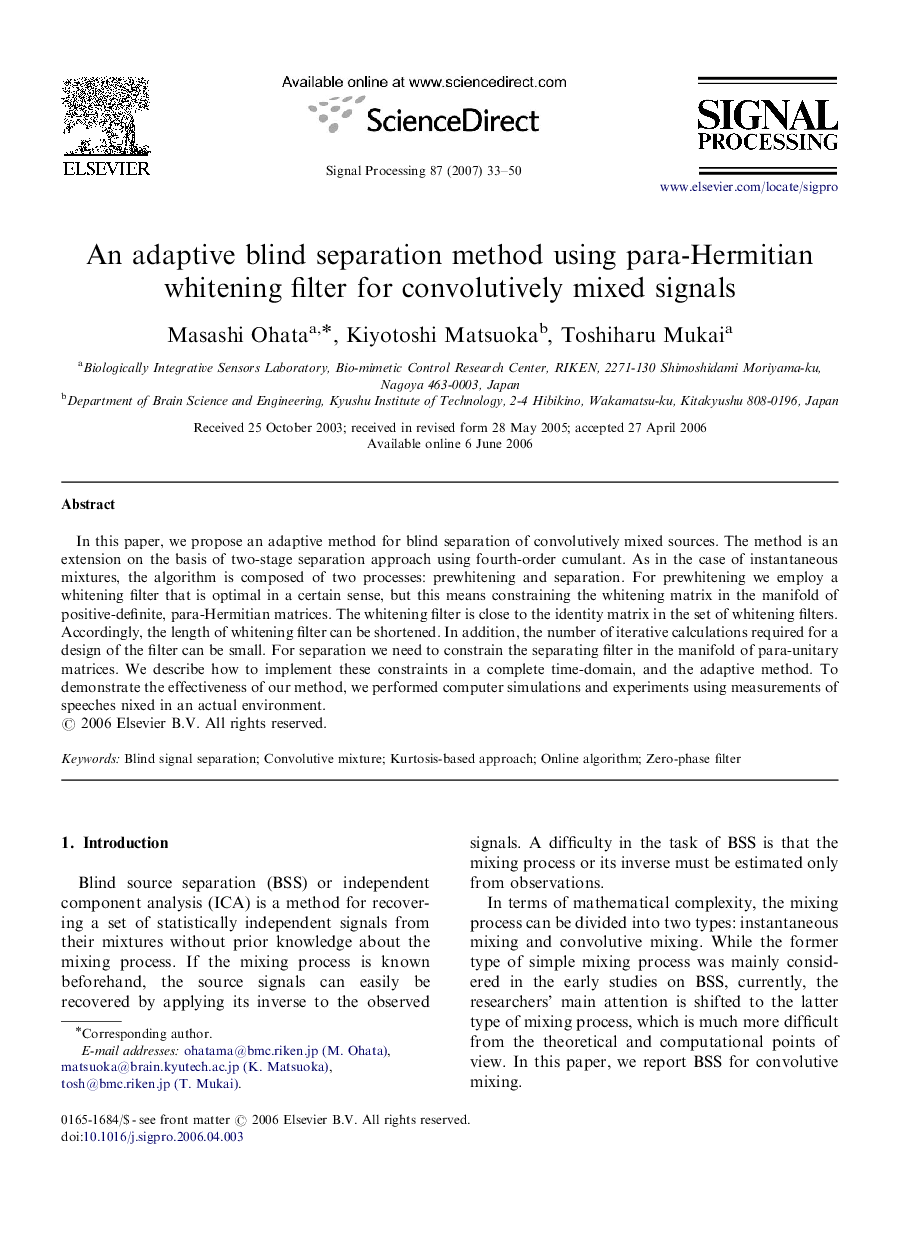| Article ID | Journal | Published Year | Pages | File Type |
|---|---|---|---|---|
| 564107 | Signal Processing | 2007 | 18 Pages |
In this paper, we propose an adaptive method for blind separation of convolutively mixed sources. The method is an extension on the basis of two-stage separation approach using fourth-order cumulant. As in the case of instantaneous mixtures, the algorithm is composed of two processes: prewhitening and separation. For prewhitening we employ a whitening filter that is optimal in a certain sense, but this means constraining the whitening matrix in the manifold of positive-definite, para-Hermitian matrices. The whitening filter is close to the identity matrix in the set of whitening filters. Accordingly, the length of whitening filter can be shortened. In addition, the number of iterative calculations required for a design of the filter can be small. For separation we need to constrain the separating filter in the manifold of para-unitary matrices. We describe how to implement these constraints in a complete time-domain, and the adaptive method. To demonstrate the effectiveness of our method, we performed computer simulations and experiments using measurements of speeches nixed in an actual environment.
